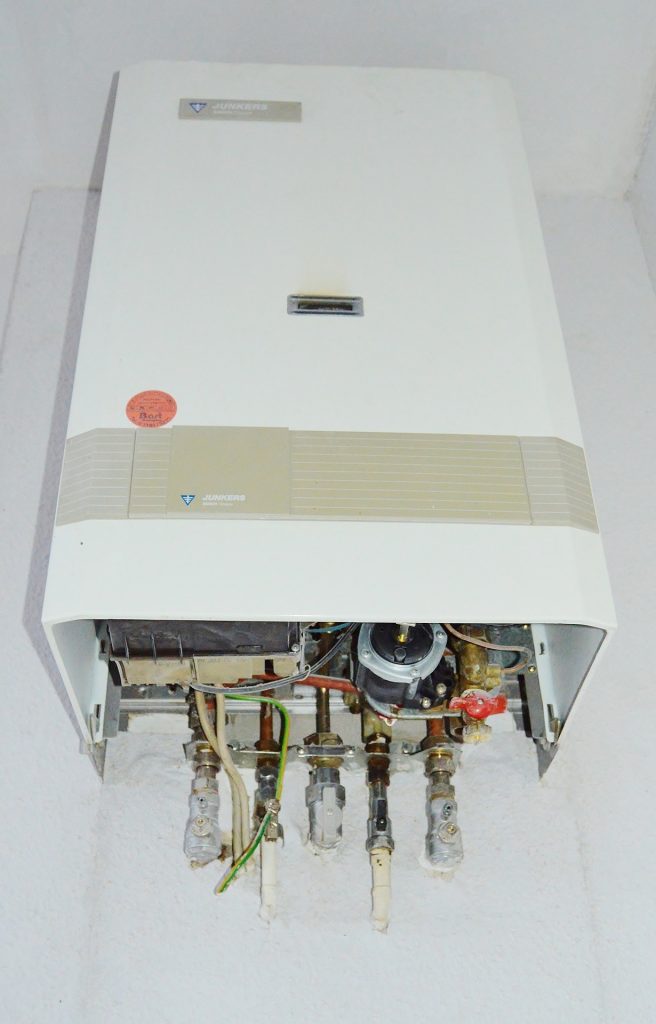With winter on its way, there is no time to replace your hot water heater like the present! The last thing anyone wants this winter is a freezing cold shower. Winter is known to cause issues for water heaters, with extensive use of water heaters, pipes breaking or freezing, and repairs in high demand.
That’s why we’ve created a list for those that want to save a little money and do it themselves! But how do you replace a hot water heater? And, you may be wondering, “can I replace my own hot water heater?” The answer is yes!
Here are some tips on when to replace your hot water heater, some materials you’ll need, and the steps you’ll need to take in order to be successful.
When to replace your water heater

There are some obvious signs that you may need to replace your hot water heater. One of the biggest and most obvious one is if your current hot water heater starts to leak! A slow drip underneath your water heater is usually a telltale sign. At this point, the water is often also muddy or rusty. These signs mean that your hot water heater has rusted through and cannot be fixed – but it can (and will) be replaced! Make sure to replace your hot water heater as soon as possible once you realize this, rather than waiting for the leak to get worse.
Other signals from your hot water heater, like insufficient or lack of hot water, usually point to issues that can be repaired, rather than flat-out replaced.
Another sign that your hot water heater needs replacing may simply be the passage of time. Like most things in life, hot water heaters age! A heater can typically last anywhere from 8 to 12 years. Even if there aren’t obvious signals that your hot water heater needs replacing, if it is old enough, it might be worthwhile to take preventative measures and replace it before issues arise.
The most important thing to remember when replacing a hot water heater is that you will be dealing with gas or electricity, which can be quite hazardous!
If you do not feel confident or comfortable with your abilities, do not hesitate to call in a professional to take care of the hard parts (or even the whole thing). Your health and safety should always be the first priority!
If you live in the Missoula, Montana region, call Plumb-Tech for help replacing your heater. We’ve been in the business for more than 15 years.
Tools you’ll need when replacing a hot water heater
- Wire cutter
- Tube cutter
- Tape measure
- Electrical tape
- 4-in-1 screwdriver
- Pipe wrench
- Adjustable wrench
- Plumbers tape
- Soldering torch
- Safety glasses
- Voltage tester
Materials you’ll need when replacing a hot water heater
- Water and gas piping
- Venting pipe and connectors
- Fittings
- Discharge pipe
- Pipe thread compound
- Solder
- Pressure relief valve
How to replace a hot water heater, step-by-step
One thing to make sure to do is to call your local department of inspections and ask them if you will be needing a permit to replace and install your hot water heater. Also, make sure to have a plumbing or electrical inspector check your work once you are finished with the project!
Purchasing a new water heater
When buying a new water heater, there are a few things you should keep in mind!
- Check the nameplate on the side of your existing unit – you’ll find helpful information like the tank’s capacity, insulation R-value, installation guidelines, working pressure, model, and serial number. The nameplate will also list the wattage capacity and voltage if you have an electric heater.
- The gallon capacity of your new heater – 40-gallon and 50-gallon heaters are the most common
- The recovery rate of the heater – also known as the number of gallons the heater will heat in an hour
- The dimensions of the heater – consider measuring the height and width of your existing heater, or the space where you will be putting your new one
- The energy efficiency ratings – there should be a sticker on the side of the new heater that indicates the estimated annual cost of operating the unit. Efficient models will obviously help reduce costs and save energy.
Removing your old heater
- Turn off the gas or electricity that is flowing to the current water heater unit
- Turn off all water supplies in the house. Turn on all the hot water faucets in the house in order to drain what is left in the existing hot water heater.
- Then, disconnect the water line that connects the water heater to the rest of the house. There is often a connection on a hose that you can simply unscrew! Once you have disconnected the pipes, remove the existing water heater.
- Water heaters can often be quite heavy, so make sure to get assistance with removal. It may also be worthwhile to use a dolly of sorts to transport the heater.
- In order to properly dispose of the water heater, you will likely need to take the empty heater to a local recycling centre or dump. They will probably charge a small fee to dispose of the heater.
Installing your new heater
- Bring in your new water heater! Put it in the place of the old water heater and connect the pipes.
- Attach the relief valve on the new heater. Screw it tightly into the tank with a pipe wrench and attach a copper discharge pipe.
- Next, solder the new copper adapters and screw the pipes into place in the hot water outlet and the cold water inlet ports on the top of the tank.
- Then, recut or extend the old tubing to fit with the new heater, and solder it together.
- Reconnect the vent and push it tightly over the draft hood and secure it into place with screws.
- Next, use two wrenches to reconnect the gas line. Make sure to use two in order to avoid stressing the valve.
- Then, to fill the tank, close the drain valve, turn the water on at the main shutoff, open the colder water valve to the water heater and leave it open. Turn on a hot water faucet until water comes out, and inspect all parts of the water heater for leaks.
- Keep an eye out for any potential fumes that, if not drafting up the flue naturally, could spill into the home.
- Turn on the gas and check connections for leaks.
- Light the pilot light according to the manufacturer’s instructions. For electric water heaters, turn the power on at the main panel after the electrical inspector checks your work.
- Finally, make sure that the hot water faucets in your house are still open. This will keep air from getting trapped in the pipes! Make sure to let the water run from each faucet for a minute before turning them off.
Tips and tricks for replacing a hot water heater
- Turn your water heater off well in advance (a couple of hours) before taking it apart and disposing of it. Giving the water time to cool will help prevent any injuries in which you could potentially burn yourself.
- Older water heaters can sometimes clog, but be patient as the water drains – it could take a bit!
- Water heaters can sometimes be quite heavy. Don’t hesitate to ask for help when transporting the old or new heater, or try to have access to a dolly to help move them.
- Many of the tools and supplies needed can be purchased at your local hardware store! Also, make sure that you have measured for the appropriate size materials to save you time and a headache!
- If your water heater is in a place where leakage could damage floors or other parts of the house, put an appropriately sized pan underneath.
- Do not set the new water heater to more than 120 degrees Fahrenheit in order to avoid scalding.
- Try to routinely upkeep your water heater! Drain the water heater twice a year, as this will get rid of sediment and increase its efficiency.
How Do You Replace a Water Heater? Conclusion
We recommend that if you do not feel comfortable replacing your own water heater, you give us a call! Sure, maybe doing it yourself could save a few bucks, but if you install the hot water heater wrong, accidentally break parts of the heater, or simply purchase the wrong types or sizes of materials, you may be spending more money than if you hired a professional. It’s better to be safe than sorry, and it is better to spend the money to get something done right, rather than risk hurting yourself or causing damage to your home. We know not everything can be a DIY and that’s why we’ve got professionals ready to help!





